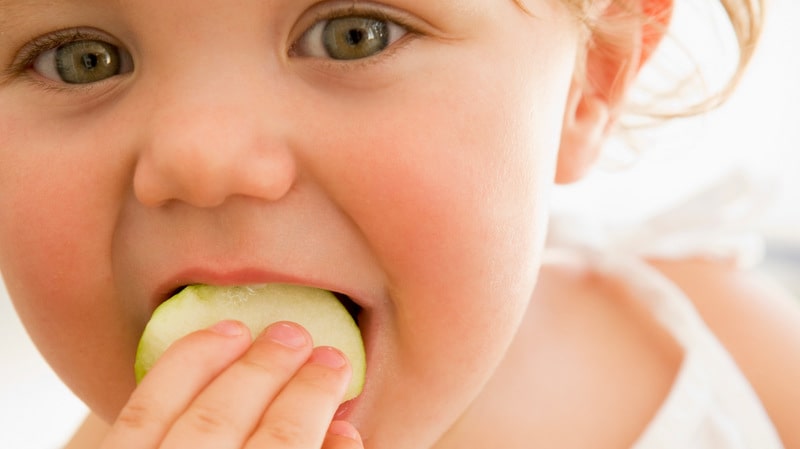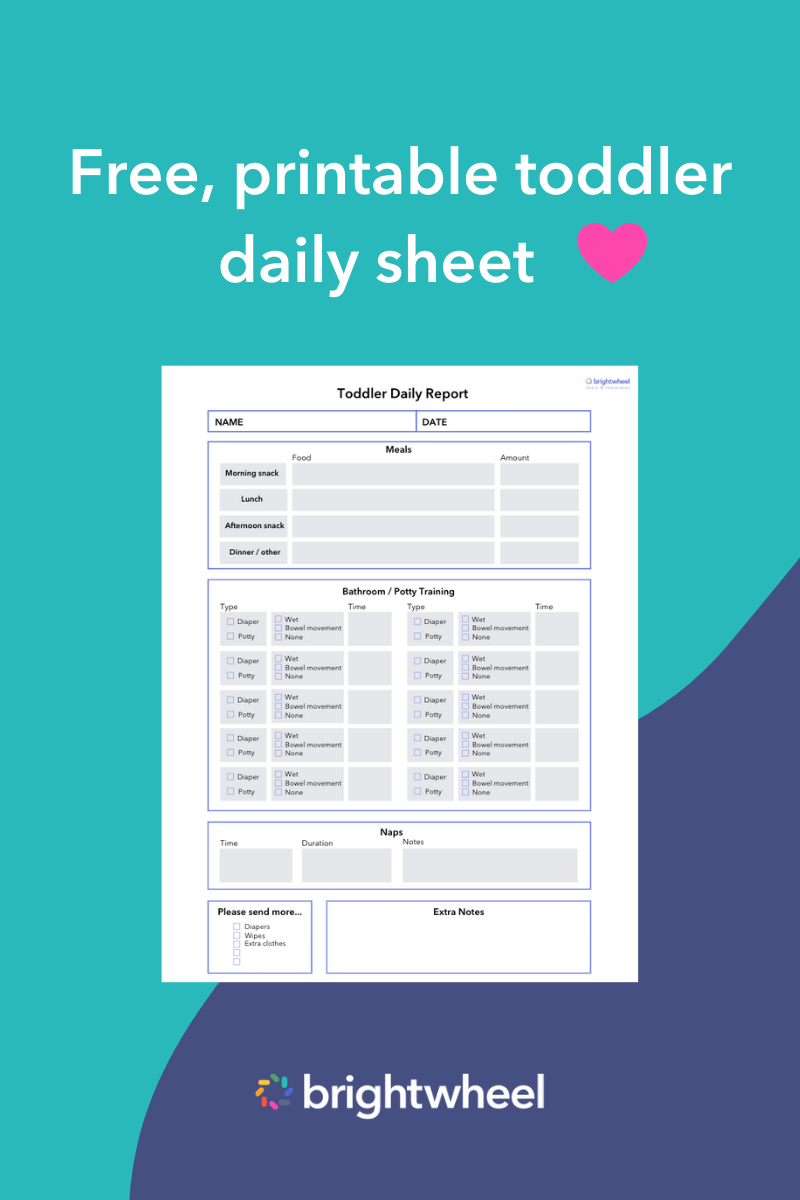
As a daycare provider, one of your many jobs is planning daycare menus. This is no easy task, given this age group often has fickle eating habits.
Healthy children grow by leaps and bounds every day, physically and mentally. And of course, you want to provide the right food to fuel their rapid development. Below are several tips to help make daycare menu planning easier.
Daycare menu tips
1. Start the day with a protein-packed breakfast
Recommended daily calorie intake depends on a child’s age, size, and gender, but most young children require between 1000 to 2000 calories a day. Some children aren’t breakfast eaters, but if yours are, this is a great opportunity to load them up with the energy they’ll need to tackle their day. As a daycare provider, you know that starting the morning off on the right foot will set the tone for the rest of the day.
A protein-based breakfast keeps children’s bellies full for longer, allowing them to concentrate on learning. It can also prevent a blood sugar crash which can cause an inability to focus or behavioral issues. A few ideas for a protein-packed breakfast for children include high-protein waffles, scrambled eggs, or whole wheat peanut butter toast.
2. Choose foods you know they’ll like
Build up a rotating daycare menu of high-quality, unprocessed foods to keep children upbeat and active throughout the day. Each meal should contain foods you know will be a hit to ensure no child goes hungry.
3. Get creative with new foods
This strategy works best if you serve new foods in addition to what they like to eat. You might offer lentils one day and the children reject it. Don’t just stop there; give it another shot soon. It might take a few tries for them to decide whether they like it or not. You can also try a different variation of the dish—if they rejected the lentil salad, maybe they’ll go for lentil soup instead.
You can try serving the meals with a different side dish or on a different plate. Even the tiniest things, like a different, colorful plate, can change a child’s opinion on whether or not they’ll enjoy a meal.
4. Aim for a 4-week rotating menu cycle
Establishing good eating habits at an early age is important. The food you serve in your childcare program can influence eating habits that last into adulthood. A four-week rotating menu is a great way to introduce variety into children’s diets and make sure they’re not eating the same menu each week.
This will require some initial investments, but once you create a menu of different meal choices, you can rotate them or mix and match them to keep the options fresh. Having a four-week cycle is ideal because two weeks or less might not be enough time to introduce a substantial variety of nutritious foods, and anything longer than four weeks can make your daycare menu more extensive than it needs to be.
With brightwheel's CACFP meal tracking functionality, you can create detailed food menus to meet CACFP nutritional guidelines. The app allows you to quickly drag and drop meals into your schedule and easily export reports to maximize your CACFP reimbursement.
5. Plan for meal prep time and effort level
If you’re serving lunch that will take some time to prepare, offer an easy grab-and-go breakfast and use some of your morning prep time to get a head start on lunch. It’s also a great idea to have a fair amount of fully prepared options in your menu rotation, which will allow more quality time with your children.
6. Incorporate meals into your lesson plans
You probably already plan meals around holidays and events, but you can also incorporate curriculum subjects with food, as well. You can get creative and teach colors, sizes, and simple math concepts.
This is an interesting and fun way to teach children about nutrition and the importance of healthy eating. These lessons can help improve the relationship children have with food. For example, you might realize some children who hate broccoli warm up to it simply because they learned it makes them grow.
7. Try not to use sweets as a reward
This may be hard to follow when you’re frazzled and want children to be calm. However, offering sweets can interfere with a child’s ability to regulate their eating. It can also encourage them to eat when they’re not hungry. You don’t want to rely on sugary treats as your foundation for positive reinforcement, as it can cause your children to overeat, consume a lot of empty calories, and have a hard time focusing on learning.
There’s nothing wrong with offering a sweet treat now and then, but offering healthier treats and snacks, such as fruit, flavored yogurt, and granola bars, is a better option.
8. Enlist their help in the kitchen
Depending on your age group, getting your children involved in food prep is a great way to teach lifelong skills. Let them measure, stir, tear, mix, mash, and pour, all while you’re teaching them about good nutrition habits.
-png.png?width=598&height=399&name=daycare-menu-meals%20(1)-png.png)
9. Involve your families
Be sure to ask families what their child likes and dislikes, and also let them know if their child recently tried something new. This can be very helpful, especially for picky eaters, because it can give families ideas on new foods to try at home.
Increase family engagement by sharing daily updates on each child's meals, naps, and learning highlights. Download our free toddler daily sheet template to keep your families informed about their child's progress.
10. Use the right tools
Using software for childcare providers, like brightwheel, can greatly help your daycare menu planning. With our all-in-one, easy-to-use platform, you can record meals served and eaten for your children and then run easy reports to file with your food program. You can also use brightwheel’s messaging and activity recording features to easily share this information between families and your center.
Meal prepping tips
Planning a daycare food menu can relieve the stress of having to come up with ideas last-minute.
1. Start small
In the beginning, you’re still figuring out what your children prefer to eat. Start with a daily or weekly childcare menu and eventually move into monthly planning as you learn their preferences.
2. Buy everything you need
To make your work easier, shop for everything you need for meal prepping. Here is a small checklist of the five food groups you’ll need for your pantry:
- Fruits: apples, bananas, peaches, berries, lemons, oranges, pears, pineapples, avocados
- Vegetables: spinach, carrots, cauliflower, sweet corn, celery, mushrooms, cucumber, zucchini, bell peppers, sweet potatoes, broccoli, grape tomatoes
- Grains: whole wheat bread, oatmeal, crackers, rice, pasta, pita bread, bagels, waffles
- Dairy: yogurt, milk, string cheese, cottage cheese
- Protein: eggs, turkey, deli meat, beans, nut butter, hummus, tuna
3. Keep a running shopping list
A running shopping list ensures you don’t forget anything but also makes collaboration and preparation easier. You can make a manual shopping list or try a grocery shopping list app, like AnyList.
4. Practice food safety
When you provide food in your daycare program, it is your responsibility to protect children with food allergies. Approximately 8% of children are affected by food allergies, with the most common being milk, eggs, and peanuts.
Keeping your daycare clean and practicing safe food handling, such as washing hands and surfaces often and refrigerating foods promptly, is more important than ever. It is also important to follow childcare health and sanitization guidelines. Establishing a cleaning routine is also an important step to ensuring the health and safety of the children in your program.
5. Create one plate
Start by making one meal to ensure it meets all the dietary requirements. For example, if you’re making lunch, prepare one plate as if you’re preparing it for a single child. Once you’re satisfied with the plate and it meets all the dietary requirements, you can follow the same procedure for all the meals you serve to your children. You can even create a checklist as you add the ingredients.
6. Pick a specific day for meal planning
There are many benefits that come with choosing a specific day for meal planning. For starters, it helps you get into a routine, making the process effortless as time goes by. It also helps with budgeting since you have a specific grocery shopping day to ensure you don’t shop more than once a week.
Sample daycare menus
Here are a few examples of daycare menus to get you started:
Weekly daycare food menu
Daycare lunch menu
Monthly daycare menu
Final thoughts
Taking the time to plan and prepare your daycare food menu ensures children eat a variety of healthy foods for all their meals. Utilize our tips above to simplify your meal planning process and create a system that works for your center.


